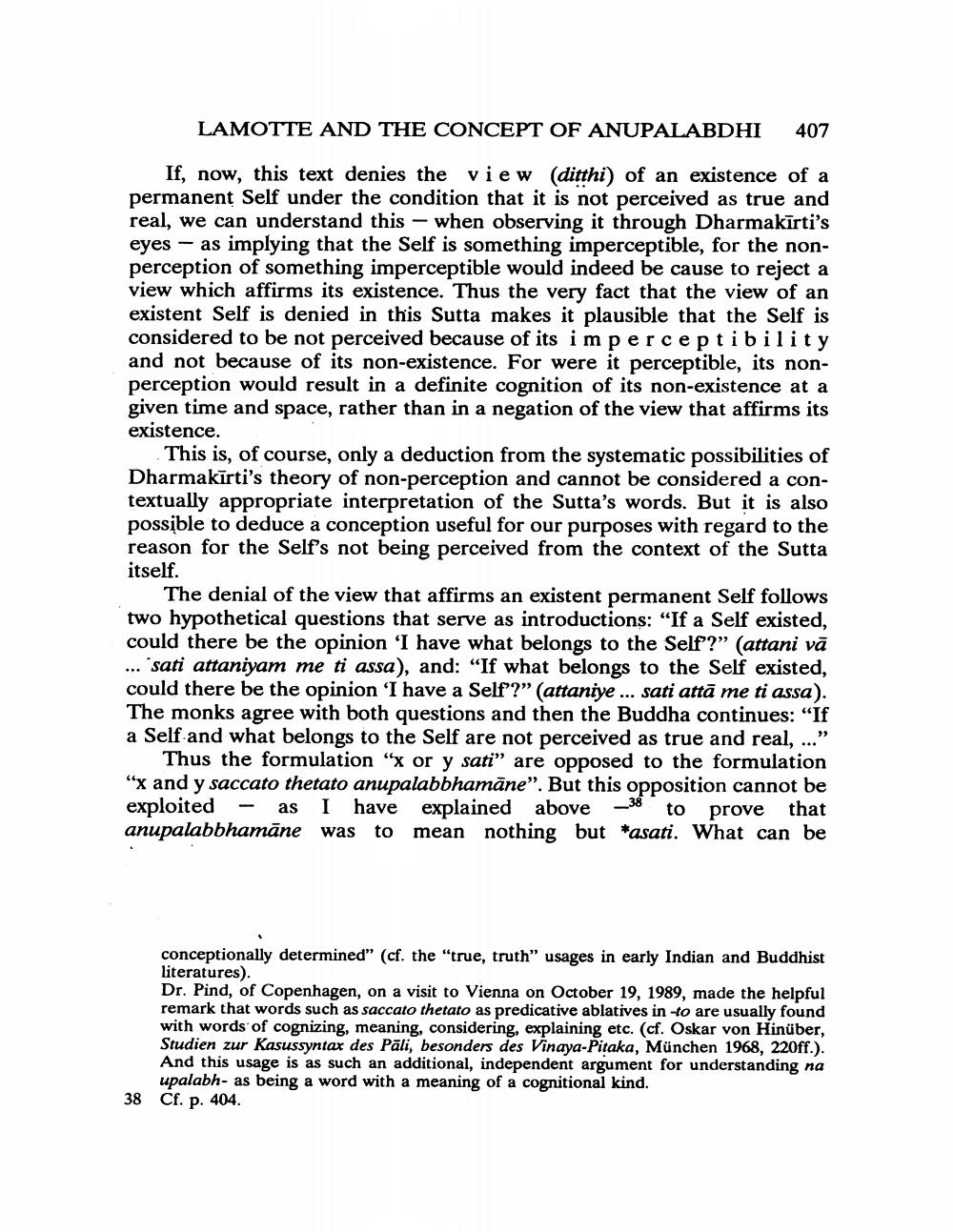________________
LAMOTTE AND THE CONCEPT OF ANUPALABDHI 407
If, now, this text denies the view (ditthi) of an existence of a permanent Self under the condition that it is not perceived as true and real, we can understand this — when observing it through Dharmakīrti's eyes - as implying that the Self is something imperceptible, for the nonperception of something imperceptible would indeed be cause to reject a view which affirms its existence. Thus the very fact that the view of an existent Self is denied in this Sutta makes it plausible that the Self is considered to be not perceived because of its imperceptibility and not because of its non-existence. For were it perceptible, its nonperception would result in a definite cognition of its non-existence at a given time and space, rather than in a negation of the view that affirms its existence.
This is, of course, only a deduction from the systematic possibilities of Dharmakīrti's theory of non-perception and cannot be considered a contextually appropriate interpretation of the Sutta's words. But it is also possible to deduce a conception useful for our purposes with regard to the reason for the Self's not being perceived from the context of the Sutta itself.
The denial of the view that affirms an existent permanent Self follows two hypothetical questions that serve as introductions: "If a Self existed, could there be the opinion 'I have what belongs to the Self?” (attani vā ... sati attaniyam me ti assa), and: “If what belongs to the Self existed, could there be the opinion 'I have a Self?" (attaniye ... sati attā me ti assa). The monks agree with both questions and then the Buddha continues: "If a Self and what belongs to the Self are not perceived as true and real, ...”
Thus the formulation "x or y sati" are opposed to the formulation "x and y saccato thetato anupalabbhamāne". But this opposition cannot be exploited - as I have explained above _38 to prove that anupalabbhamāne was to mean nothing but *asati. What can be
conceptionally determined" (cf. the "true, truth” usages in early Indian and Buddhist literatures). Dr. Pind, of Copenhagen, on a visit to Vienna on October 19, 1989, made the helpful remark that words such as saccato thetato as predicative ablatives in -to are usually found with words of cognizing, meaning, considering, explaining etc. (cf. Oskar von Hinüber, Studien zur Kasussyntax des Pāli, besonders des Vinaya-Pitaka, München 1968, 220ff.). And this usage is as such an additional, independent argument for understanding na upalabh- as being a word with a meaning of a cognitional kind. Cf. p. 404.
38




